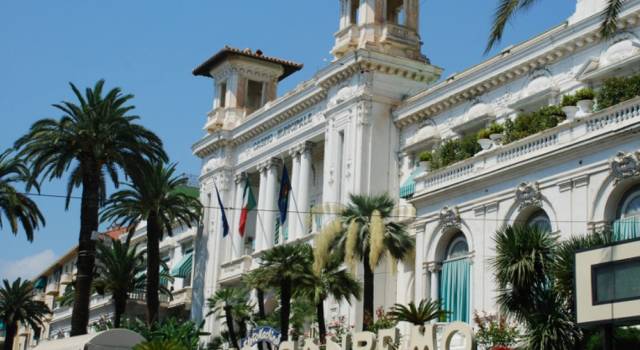Designed by the French architect Eugène Ferret, the building opened in 1905 and it was called Kurzal. It was made for indoors entertainment for foreign guests and in the first two years it was used for parties and shows, and also illegal gambling.
In 1927 the new Mayor, engineer Pietro Agosti, announced the birth of the Casinò thanks to Mussolini’s decree that legalized gambling.
At the beginning of 1928 the extension of the structure began and two new wings, the sala 500 and the two lateral domes were added. The building took the aspect that it still has today, eclectic in style with several Liberty elements. *
The Casinò has richly decorated Art Nouveau style rooms and a medieval living-room. It’s decorated with sculptures, huge Murano glass and wrought iron chandeliers. There are also more modern elements like the ex Party Hall and the Roof Garden. The theatre room is the seat of
San Remo Symphony Orchestra, (one of the eleven stable orchestra in Italy), and is one of the best theatres of the region with an excellent acoustic.
Luigi Pirandello with Marta Abba, his favourite actress, performed the comedy “Quando si è qualcuno” in 1933 for the first time.
The Casino was closed during WW2 and opened again in 1945. New events were proposed to launch the tourist season again through mundane evenings and parties until the first edition of Sanremo Festival of the Italian Song on the 29th January 1951 was performed and broadcasted there, keeping that seat till 1976, when the singing contest was moved to the Ariston Theatre.
Main famous people where regular guests and contributed to create the image and brand of the Casino during its 110 years of activity.
In the rooms of the gambling house you could meet Vittorio De Sica, King Gustav of Sweden, King Leopold of Belgium, Ranieri and Grace of Monaco, King Faruk of Egypt, who in the 50ies where daily visiting the green gaming tables.
A weird peculiarity about gambling is the superstitious rite gamblers had of touching the foot of sculpture called “Cica Cica” in the entry Hall (a work by Odoardo Tabacchi, 1884); it represents a naked girl sitting on a rock and with her hands performing a lucky charm gesture!

